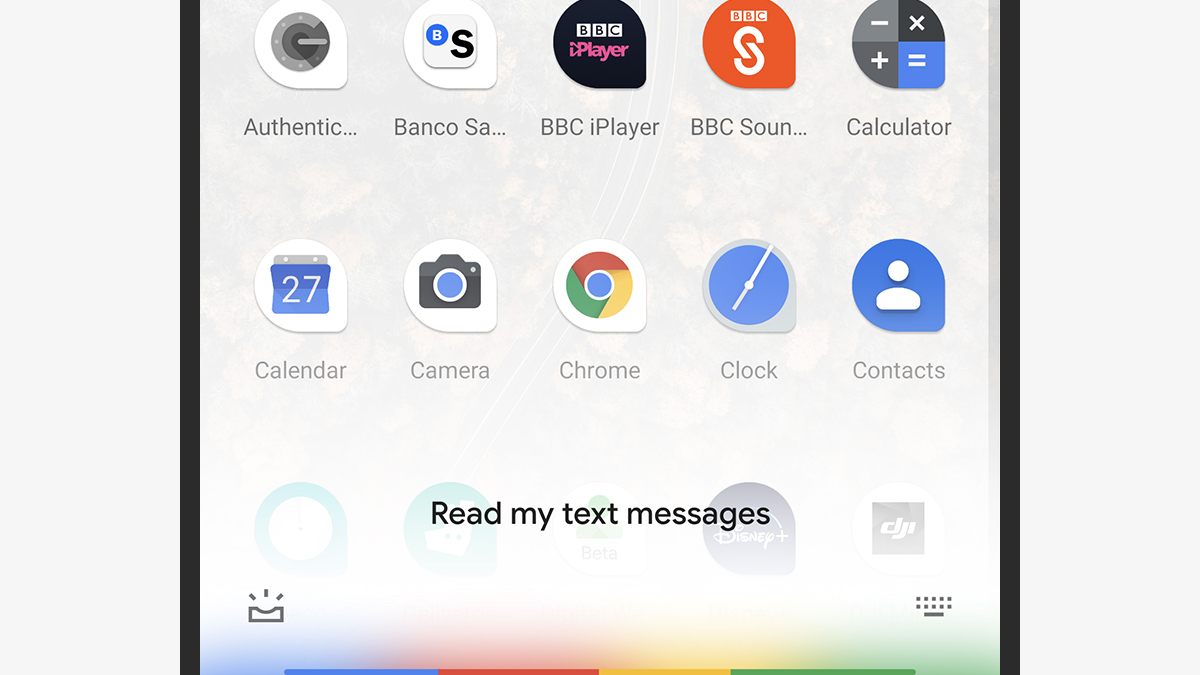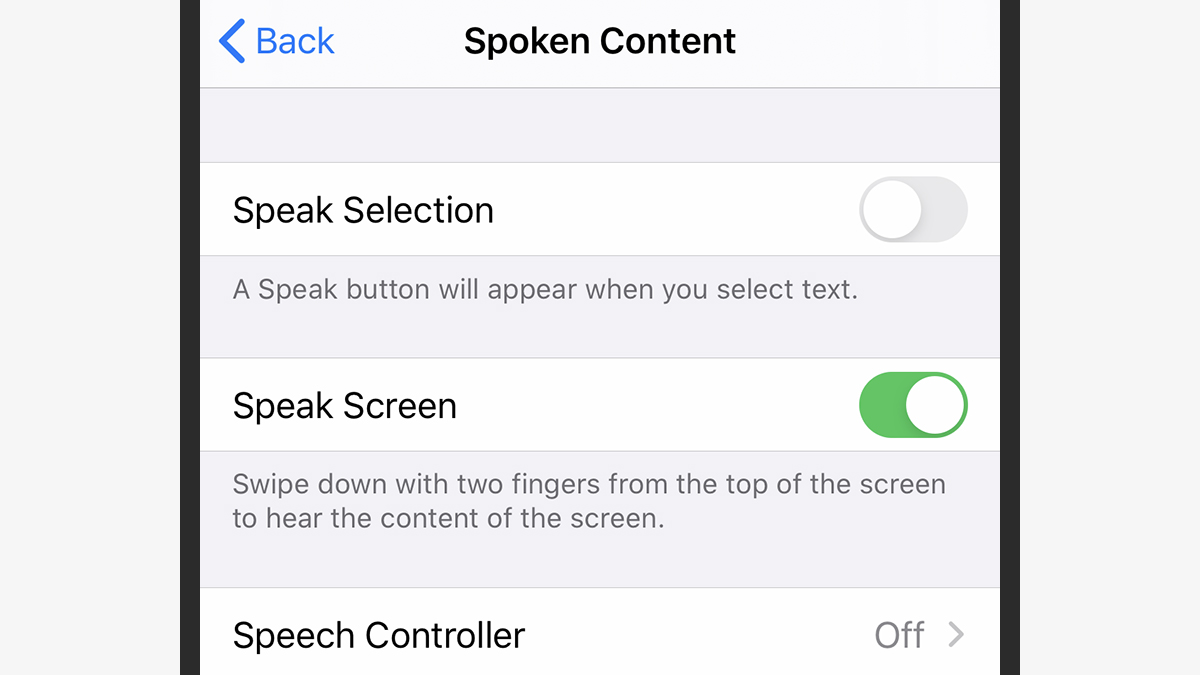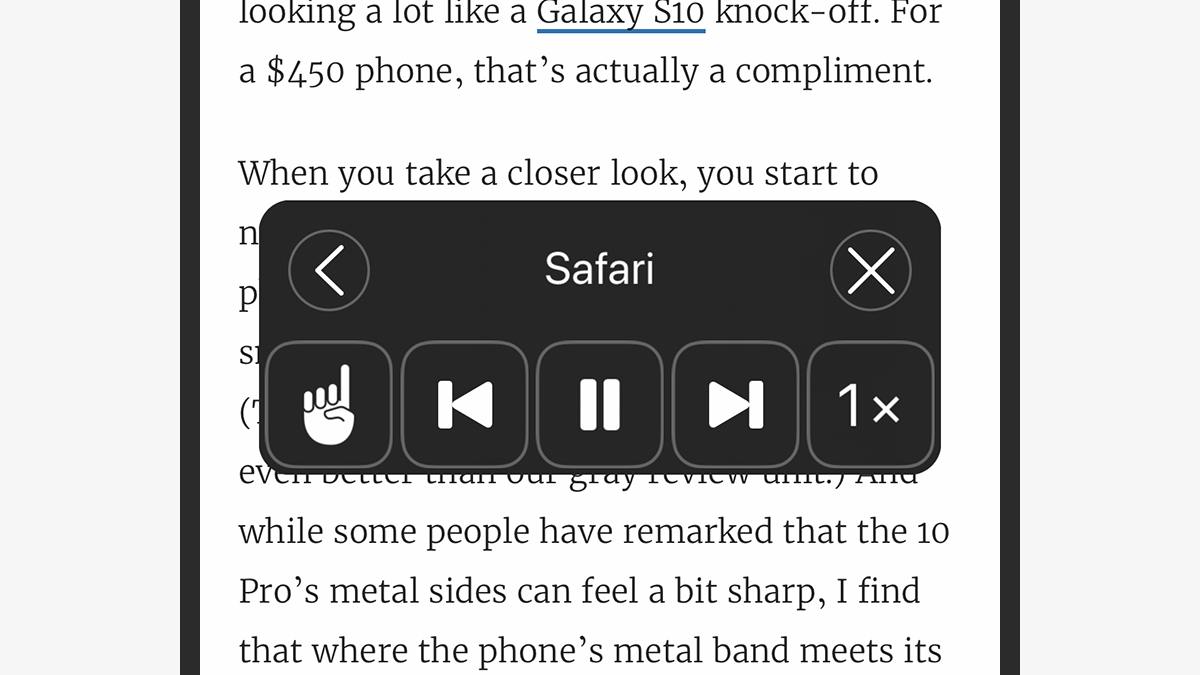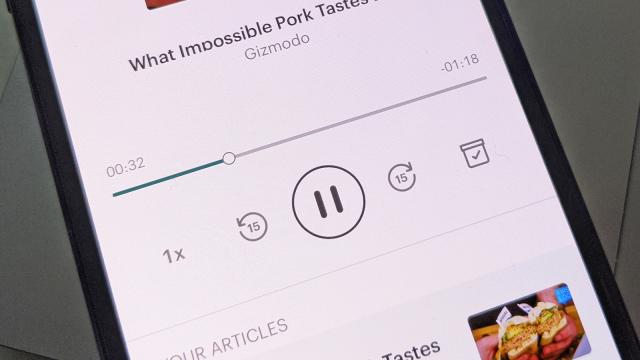Image: Gizmodo
Whether you’re zooming down the freeway, or crammed into a subway car, or even in a darkened movie theatre, it’s not always convenient or possible to pull up your smartphone’s screen as you normally would. But with a few tweaks to your phone’s OS you can get the most important information off your phone without having to look down at the display. Here’s how to get all the good stuff on your phone read out through the speaker or your headphones.
Brought to you by Mustang. We’ve all had tech related regrets. Betamax, backing the Zune against the iPod, letting that precious vinyl collection go. No one likes living with regrets, so don’t add what you drive to that list. Stop thinking about it and just book a Mustang test drive already.
Android
The Google Assistant or Google Now or whatever version you have on your phone isn’t all that brilliant at reading stuff out to you beyond driving directions and answers to trivia questions, but it can do SMS messages. Activate “OK Google” with the voice command (enabled in Voice under Settings in the Google app) then say “read out my text messages” to launch the feature.
Android reads out your five most recent incoming SMSes, with the option to repeat or reply to each one along the way, and it works really well. Unfortunately the same trick can’t be used to read out emails, or websites, or anything else you might want to hear — instead you need to use the text-to-speech engine built into the mobile OS.

Select to Speak on Android. (Image: Screenshot)
From Settings tap Accessibility then Text-to-speech output and configure your options accordingly. Back on the Accessibility screen, tap Select to Speak and turn it on. You’ll notice a new figure icon on the right-hand side of the navigation bar, and you don’t actually have to do any selecting to get what’s on screen read out to you.
Just tap the icon, hit play, and you’re up and running. The text-to-speech engine does have a few quirks, and doesn’t use the most natural-sounding voice we’ve ever heard, but it does the job of getting everything from emails to websites read out for you if you can’t look at the screen for whatever reason.
Android being Android, plenty of other apps can lend a hand — Hands-Free SMS will set you back $US4.99 ($6) but automatically reads out your texts as they come in, and lets you reply using your voice as well. ReadItToMe, which is free to download but requires in-app payments for extra features, covers not just texts but also incoming call details and other notifications from the likes of Hangouts, WhatsApp, and Telegram.

messageLOUD works in the gym or in the car. (Image: Screenshot)
Meanwhile messageLOUD (free to try, $US2.99 ($4) to unlock) covers texts, emails, and messages from WhatsApp and Facebook, and has modes for driving, exercising, and working. Then there’s @Voice Aloud Reader (free, ad-supported) which works on top of Android’s text-to-speech engine and can read out just about anything you want, as long as it can be accessed through an app’s Share menu.
That should be enough of a selection to keep you going, but bear in mind that several apps come with a read aloud feature built in. If you’re saving web articles to Pocket or Instagram to catch up on later, for example, both apps have options to read out saved articles if you don’t want to look at them on screen.
iOS
Over on iOS, Siri will also respond if you say “read out my text messages” (set up hands-free operation under Siri in Settings). You get the option to reply with your voice too, though Siri only talks you through unread messages, not ones you’ve already seen, which limits your options somewhat.
Siri has the edge over its Android equivalent with emails though, and will gladly talk you through the contents of your inbox if you say “read out my emails” once Siri is listening. You only get the subject headers, the senders, and the dates, however: You need to say “read out my latest email” to hear the body text, and then you only get the most recent message to drop into your inbox.

Siri can handle texts, up to a point. (Image: Screenshot)
To go further, you need to activate some accessibility options. Choose Accessibility from General in Settings, then select Speech and enable Speak Selection and Speak Screen. You can configure the iOS text-to-speech engine here as well, from the speed of the speech to the pronunciation it uses.
Select any text on screen, and you get a new Speak option. What’s more, you can swipe down with two fingers from the top of the screen to bring up a console that will read out the text inside any app, and you get playback and speed controls as well. It works everywhere from Safari to Mail, and the reading will even carry on as you switch to and use other apps on your phone.
Once you’ve enabled the accessibility options through the iOS Settings app, you can launch them through Siri as well, if you need to stay hands-free (though admittedly you’d need to get the right app and page up on screen first). Just say “hey Siri, speak screen” and you get the same end result as you do with a two-finger downward swipe.

Speak Screen in iOS reads out anything you want. (Image: Screenshot)
Apple being Apple, you don’t get the same choice of third-party reading apps as you do on Android, because they just don’t have the same sort of low-level OS access. One exception is Reader+ for Gmail, which works with Google’s email client. You can use it as-is with the ads or pay $US9.99 ($13) to have the advertising removed. Speaking Email (basic features for free or $US1.99 ($3) a month) is another email reading app, this time covering Gmail, Microsoft accounts, and Yahoo Mail.
As on Android, if you’re using Instapaper or Pocket to save articles from the web that you can’t get around to immediately, you can use the text-to-speech features built into those apps to listen to pages you’ve saved as well — the option is behind the Share menu in Instapaper and the More menu (the three dots) in Pocket.
Alright that’s enough tech talk. Put down the device, step away from the screen. It’s time to stop thinking and start driving. Book your Mustang test drive today.
